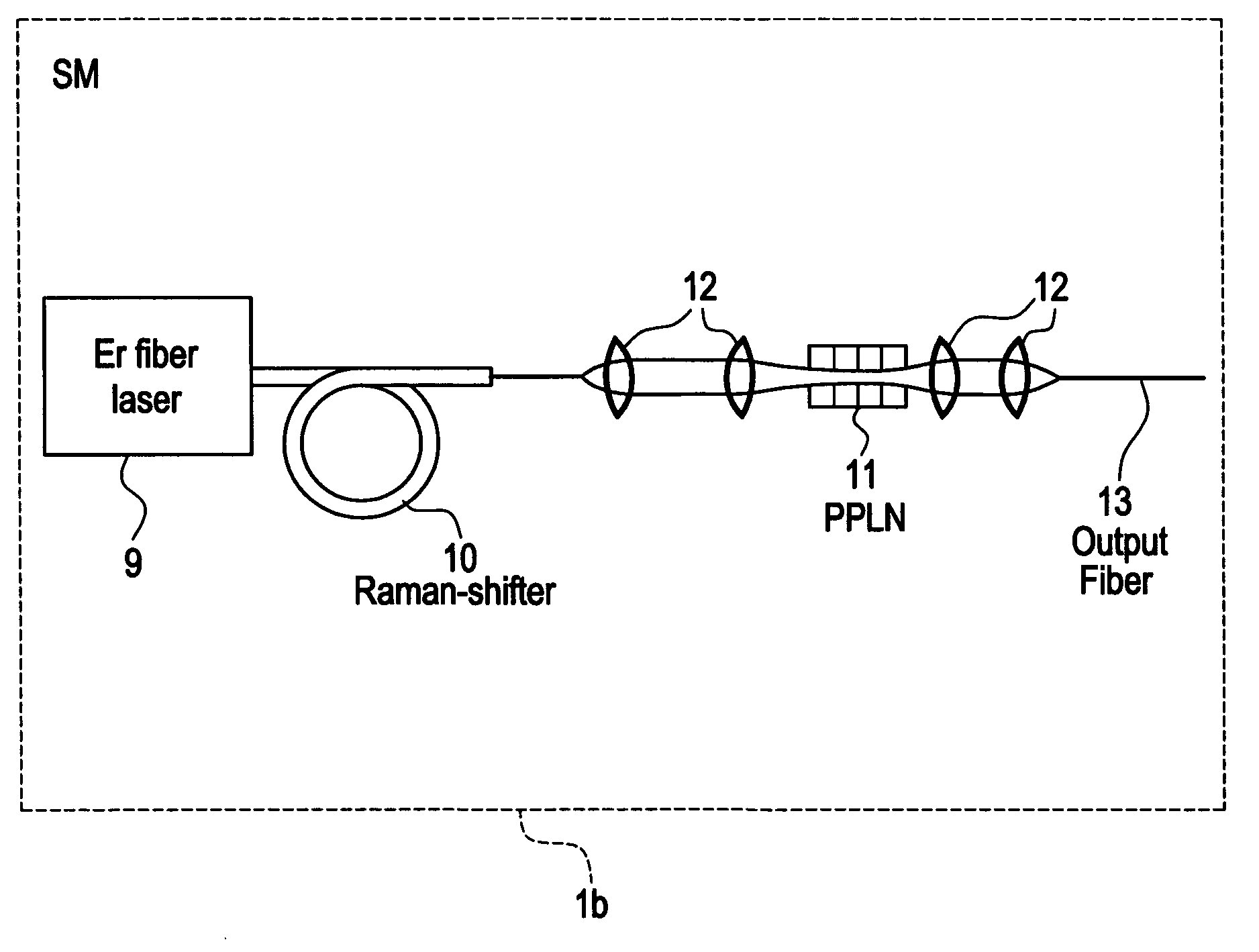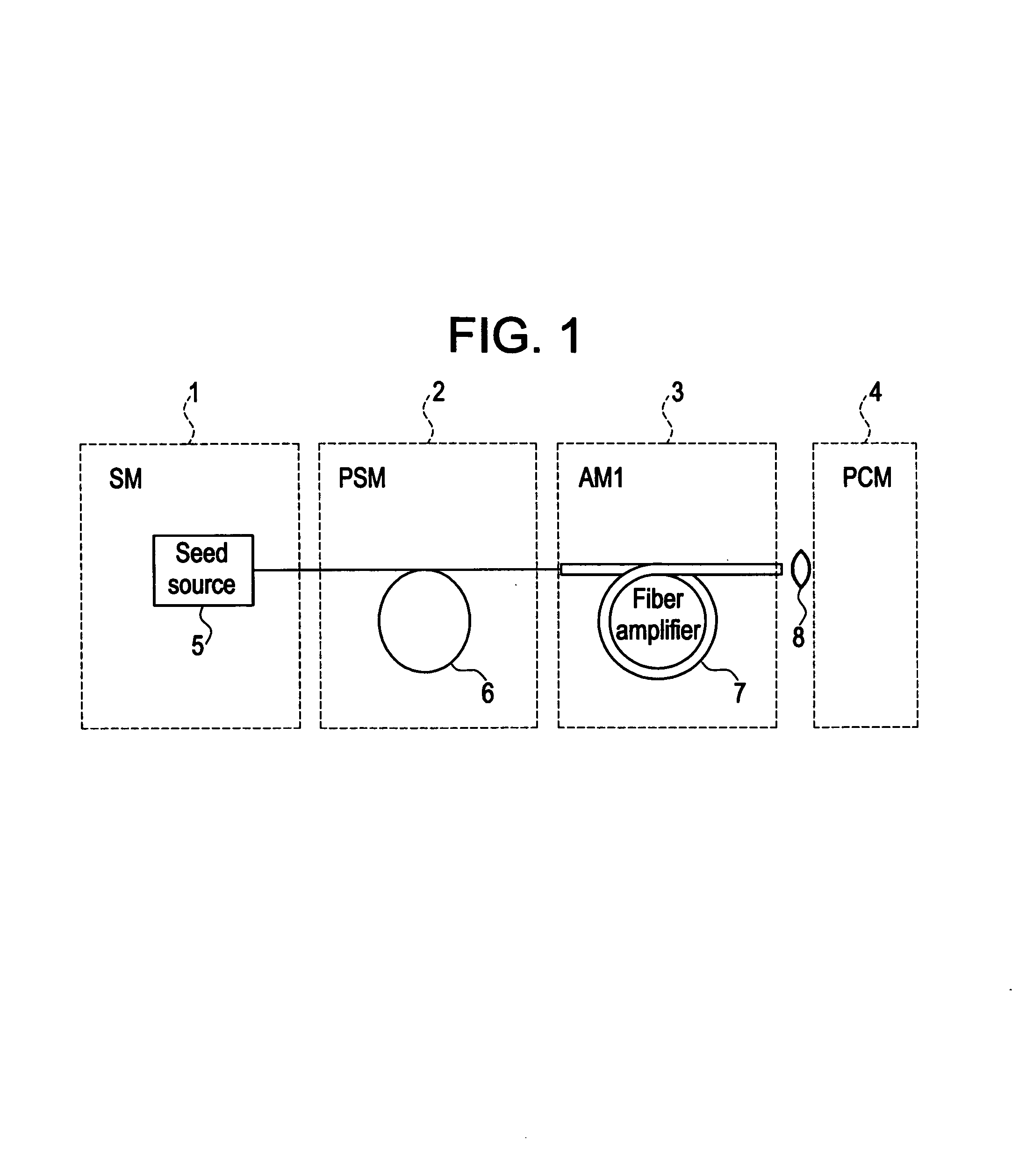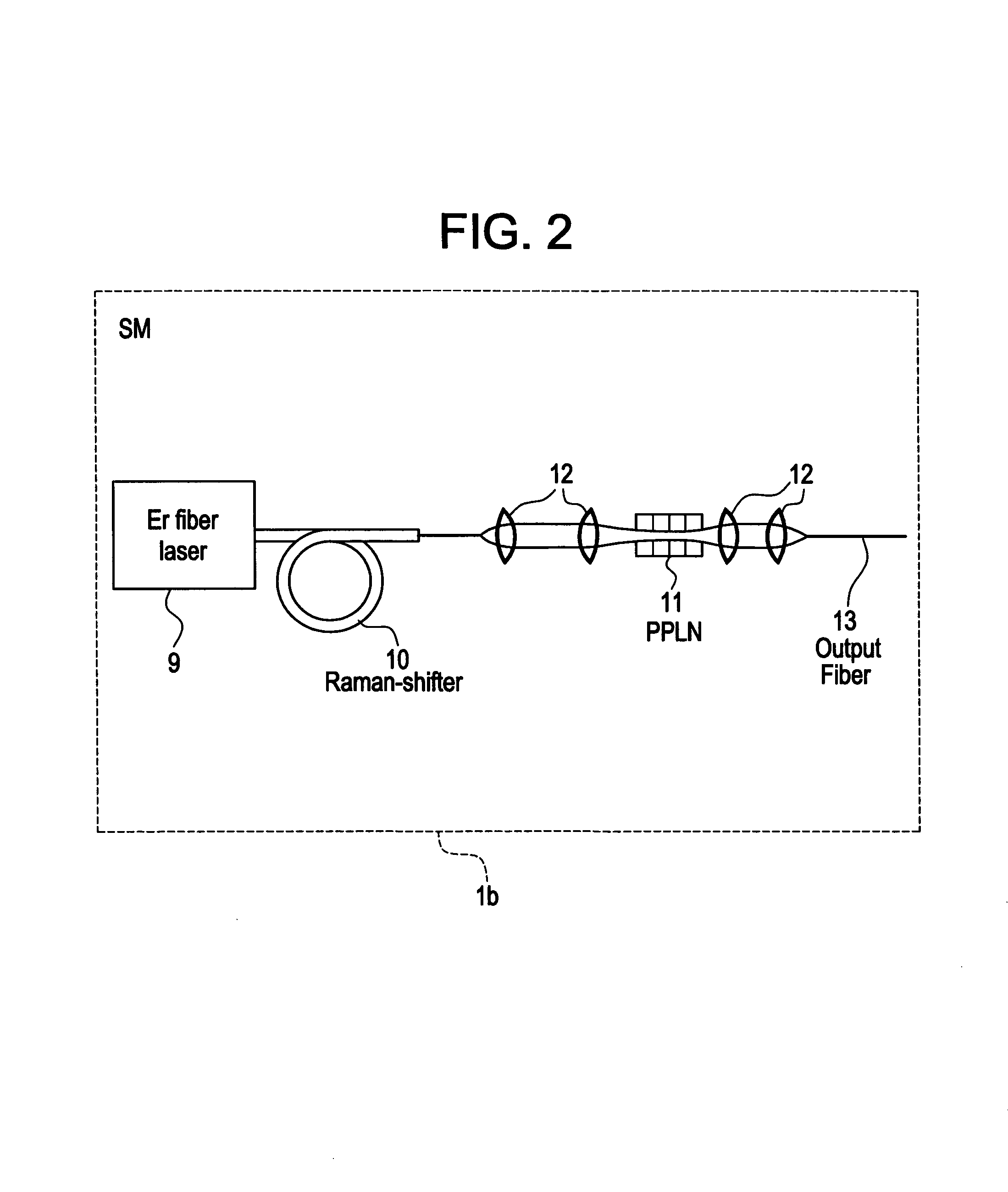Modular, high energy, widely-tunable ultrafast fiber source
a fiber source, high energy, widely tunable technology, applied in the direction of fiber transmission, lasers, transmission, etc., can solve the problems of limited options for wavelength tunability, inability to use such standard chirped pulse amplification systems, and inability to control the pulse shape for a further optimization of the overall system performance, etc., to achieve high peak and high average power, low noise
- Summary
- Abstract
- Description
- Claims
- Application Information
AI Technical Summary
Benefits of technology
Problems solved by technology
Method used
Image
Examples
Embodiment Construction
[0047]A generalized illustration of the system of the invention is shown in FIG. 1. The pulses generated in a laser seed source 1 (seed module; SM) are coupled into a pulse stretcher module 2 (PSM), where they are dispersively stretched in time. The stretched pulses are subsequently coupled into the fundamental mode of a cladding-pumped Yb fiber amplifier 3 (amplifier module, AM1), where the pulses are amplified by at least a factor of 10. Finally, the pulses are coupled into a pulse compressor module 4 (PCM), where they are temporally compressed back to approximately the bandwidth limit.
[0048]The embodiment shown in FIG. 1 is modular and consists of the four sub-systems; the SM 1, PSM 2, AM 13 and PCM 4. The sub-systems can be used independently as well as in different configurations, as described in the alternative embodiments.
[0049]In the following, discussion is restricted to the SM-PSM-AM1-PCM system. The SM 1 preferably comprises a femtosecond pulse source (seed source 5 ). Th...
PUM
| Property | Measurement | Unit |
|---|---|---|
| core size | aaaaa | aaaaa |
| pulse width | aaaaa | aaaaa |
| wavelength tunability | aaaaa | aaaaa |
Abstract
Description
Claims
Application Information
 Login to View More
Login to View More - R&D
- Intellectual Property
- Life Sciences
- Materials
- Tech Scout
- Unparalleled Data Quality
- Higher Quality Content
- 60% Fewer Hallucinations
Browse by: Latest US Patents, China's latest patents, Technical Efficacy Thesaurus, Application Domain, Technology Topic, Popular Technical Reports.
© 2025 PatSnap. All rights reserved.Legal|Privacy policy|Modern Slavery Act Transparency Statement|Sitemap|About US| Contact US: help@patsnap.com



